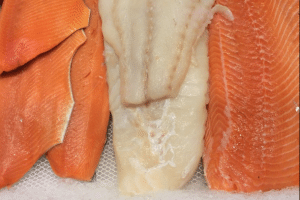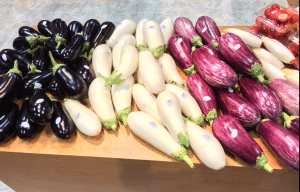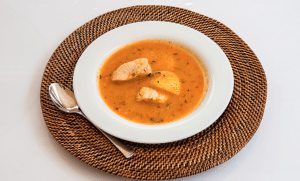An Italian Introduction to the Mediterranean Eating Pattern
Enrico Forte, an Italian cookbook author, has joined us today to introduce the Mediterranean eating style and review its myriad health benefits! Take it away, Enrico!The Mediterranean diet plan is a combination of the traditional cooking styles of the countries surrounding the Mediterranean Sea, all the way from Spain to the Middle East.An increasing number of studies indicate that eating a diet rich in plant foods and "good" fats can protect against cardiovascular disease, metabolic syndrome, cancer, obesity, type 2 diabetes, dementia, and Alzheimer’s disease. So, how can you make some Mediterranean habits a part of your eating pattern? Here are a few ideas...
So, how can you make some Mediterranean habits a part of your eating pattern? Here are a few ideas...
- Eat mostly plant foods, like fresh fruits and vegetables. (For more strategies to make this tip a reality, check out the online class Building a Plant-Based Eating Pattern: Vegetables).
- Choose whole grains instead of refined grains. For example, eat brown rice instead of white rice.
- Make legumes, fish, poultry, and nuts your primary sources of protein.
- Replace butter with olive oil, especially when you're cooking.
- Use herbs and spices to flavor foods instead of salt.
- Limit servings of red meat to 1-2 times per month.
- Limit servings of cheese and milk to 2-3 times per week.
- Drink red wine (optional).
 Now let's talk details. The Mediterranean diet includes...
Now let's talk details. The Mediterranean diet includes...
- Fresh fruits like apples, strawberries, apricots, peaches, and kiwis.
- Vegetables like zucchini, eggplants, spinach, peppers, sprouts, broccoli, and cauliflower. Try fresh or frozen options.
- Whole wheat grain foods like bread, pasta, pita, pizza, and brown rice.
- For spreads, think extra virgin olive oil instead of margarine or butter. Margarine and butter contain too many saturated and/or trans fats to fit into this diet model.
- The primary source of fat in the Mediterranean is extra virgin olive oil. It provides monounsaturated fat, which helps lower LDL cholesterol (aka "bad" cholesterol) and contains the highest levels of antioxidants. Research indicates that a diet rich in olive oil could play a role in the prevention of osteoporosis, heart disease, and some types of cancer.
- Nuts, such as almonds, walnuts, and pistachios, are high in healthful fats. Fatty fish like mackerel, sardines, tuna, and salmon are rich in omega-3 fatty acids.
- The Mediterranean diet includes a moderate amount of red wine. Men can drink 2 glasses per day while women can have 1 glass per day.
 And here's a sample Mediterranean diet menu:
And here's a sample Mediterranean diet menu:
- Breakfast: Greek yogurt topped with berries and walnuts, coffee or tea
- Lunch: Lentil soup with Swiss chard, topped with tzatziki sauce. Serve hummus and whole grain pita bread on the side
- Snack: Whole grain crackers and cheese
- Dinner: Roasted cod paired with a wheat berry salad (cooked wheat berries with olive oil vinaigrette, feta, parsley, and tomatoes) and a glass of red wine
- Dessert: Fresh fruit drizzled with a touch of honey
Enrico Forte writes for http://www.mediterraneanbook.com/, a blog that helps people learn how to follow the Mediterranean diet. It even has a free e-book filled with Mediterranean recipes.And the fun doesn't stop there! I've been crafting lots of Mediterranean recipes in my test kitchen, and here are a few of the most popular ones...
- Greek Dips and Kabob Plate
- Grilled Sicilian Eggplant Rolls
- Light Valencia Paella
- Potato, Tomato, and Onion Gratin from French Provence
- Provencal Fennel Chicken Stew
References:Willett, Walter C., et al. "Mediterranean diet pyramid: a cultural model for healthy eating." The American journal of clinical nutrition 61.6 (1995): 1402S-1406S.Trichopoulou, Antonia, et al. "Adherence to a Mediterranean diet and survival in a Greek population." New England Journal of Medicine 348.26 (2003): 2599-2608.Trichopoulou, Antonia, et al. "Energy intake and monounsaturated fat in relation to bone mineral density among women and men in Greece." Preventive medicine 26.3 (1997): 395-400.Here are a few great Mediterranean resources for your collection![shopify embed_type="product" shop="nutrition-education-store.myshopify.com" product_handle="mediterranean-diet-class-with-powerpoint-handouts-leader-guide" show="all"][shopify embed_type="product" shop="nutrition-education-store.myshopify.com" product_handle="mediterranean-diet-poster-18x24" show="all"][shopify embed_type="product" shop="nutrition-education-store.myshopify.com" product_handle="mediterranean-diet-9-photo-montage-print-16x20" show="all"]And don't miss these phenomenal posters and banners![shopify embed_type="collection" shop="nutrition-education-store.myshopify.com" product_handle="20-ways-to-decorate-your-nutrition-education-or-health-wall"]


